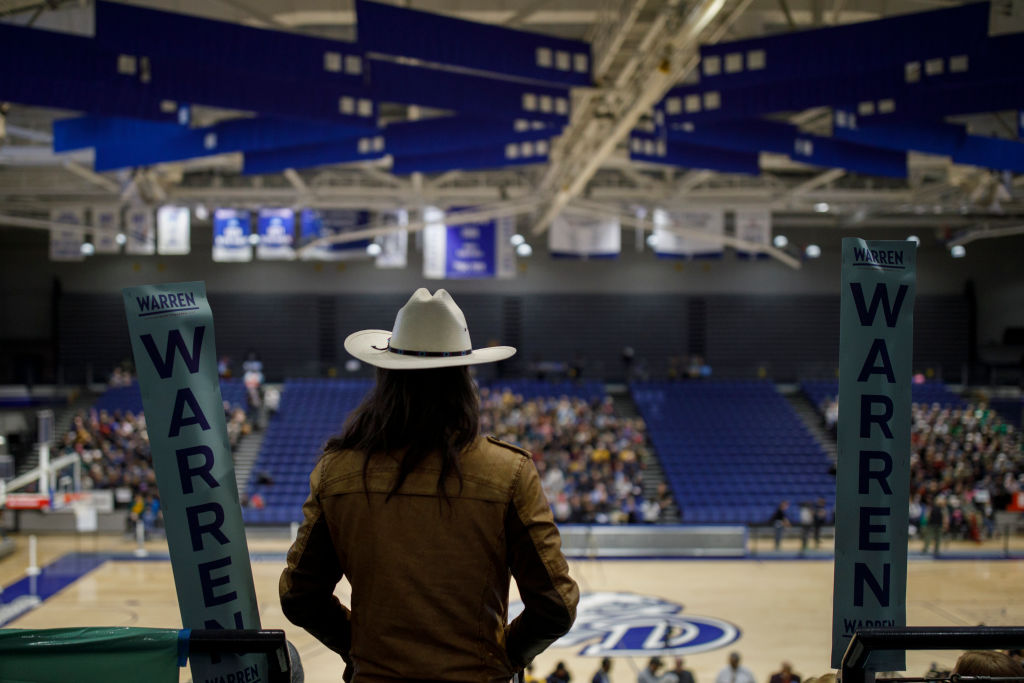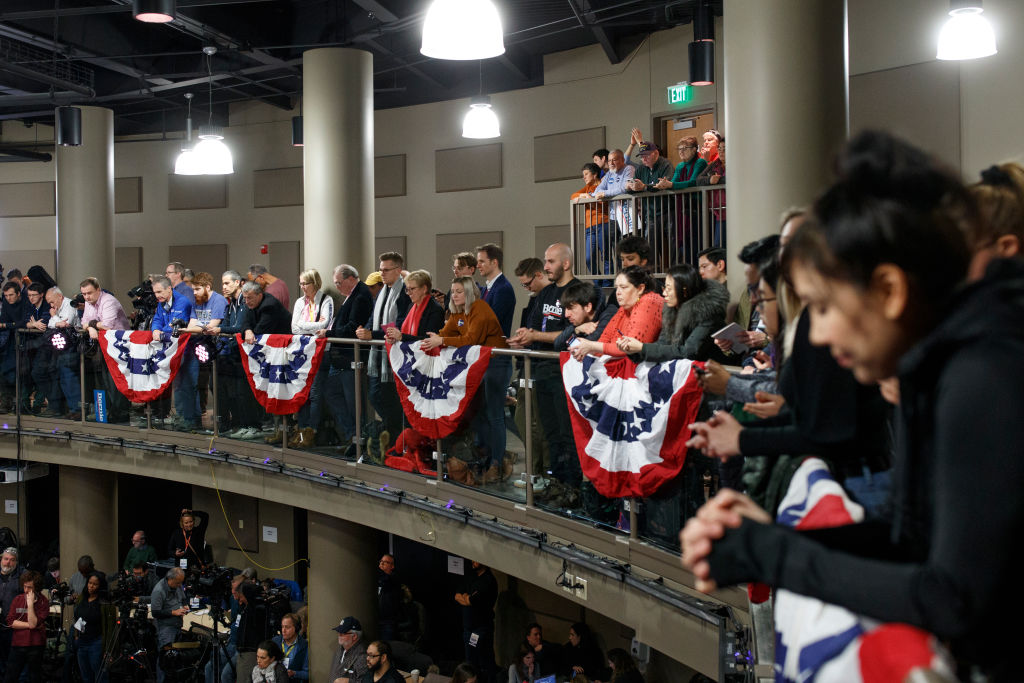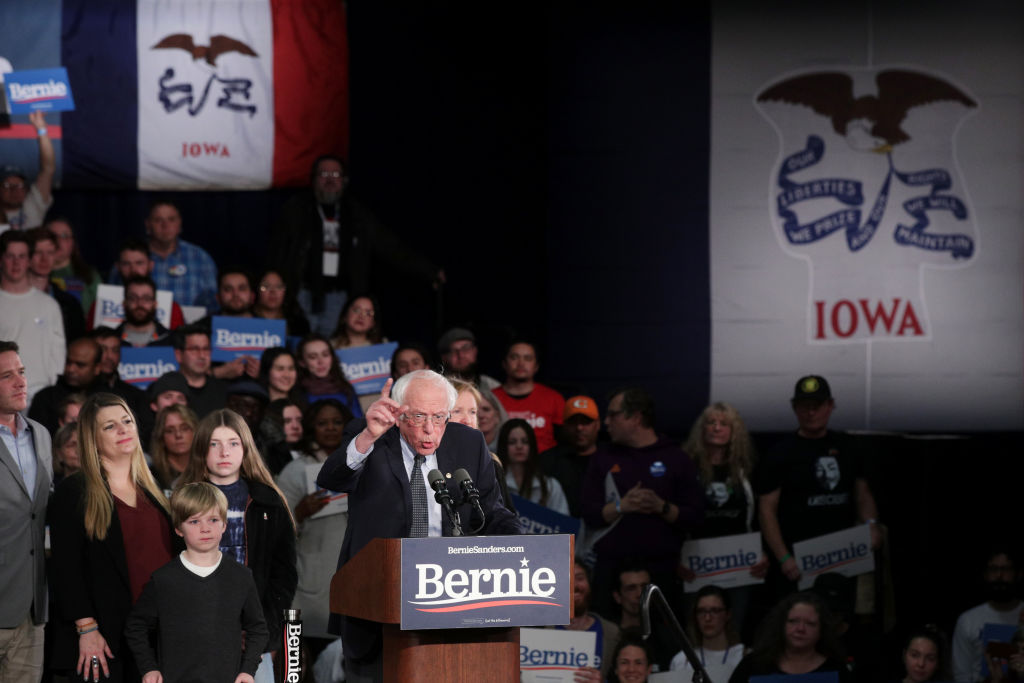UPDATED — Feb 7th, 2020 06:30 PST
Monday was the official start of the presidential election cycle. As per (fairly new) tradition, Iowa held the first caucus of the 2020 presidential election. Though the results are still pending (thanks, it seems, to a tech error), the Iowa campaign trail signals the run-off to the Democratic National Convention in Minneapolis, where the DNC will formally announce their pick for a run at the presidency in November.
Of course, there’s a lot of green between now and November 3rd. The Democrats will end up holding 57 primaries — seven of which are caucuses — running between now and June 7th, when the last primary is tallied in Puerto Rico. In essence, a primary or caucus is a chance for a state and it’s counties and districts to vote for a candidate to run for office, according to their party registration. It’s also when the districts choose their delegates to send to the national conventions (and other local election committees).
There are some major differences along party lines here. Republicans tend to have different rules for procedure and the selection process at their primaries and caucuses. But the overall gist is basically the same: People gather, talk, and vote one way or another. The real differences lie in that last part. That’s where a primary varies greatly from a caucus. Let’s take a look at how and why.
What Is A ‘Caucus’?

As plainly as possible, a primary is a secret ballot vote amongst voters registered with a specific party in a specific district. A candidate shows up, hosts parties, gives speeches, visits diners, shakes hands, and stumps around the state to drum up local support for the campaign. Then, those citizens vote in a ballot booth for their preferred candidate from their party. The winner is assigned delegates to go to the national convention to support the nomination bid. In the DNC, delegates are assigned on a sliding scale, according to percentages the also-rans received in a primary.
A caucus, on the other hand, is a longer process that engages voters more directly. Basically, a caucus has all the hallmarks of a campaign stop for the contenders: diners, stump speeches, a lot of handshakings. However, in cases like Iowa, voters gather at caucus stations (usually in the same place as a polling station) and stand (or sit) in groups that support their preferred candidates. It’s more like a neighborhood meeting than a voting booth experience. In fact, the word comes from Algonquin for “meeting.”
Once the meeting starts, there’s a 30-minute section where voters try to convince other participants to join their cause or gain the support of voters who aren’t supporting any particular candidate yet. A count is taken of which caucus participants stood with which candidate. Any candidate that doesn’t have at least 15 percent support from the participants is dropped (this changes if there are less than three delegates being awarded from the district). The voter/participants are given 30 minutes to realign if their candidate didn’t past the 15 percent point (but participants whose candidates did pass that mark are locked into their choice). This is crucially different than a secret ballot primary vote in that you can recast your “vote” for your second choice in this case.
After the realignment is done, a headcount is made to see who has the most support (that is, gets the most delegates) from the district. The headcounts are made for each of the candidates with the same 15 percent or more benchmark. Those results are reported to the state DNC party and 49 delegates are awarded to candidates according to their caucus support. After that, county delegates are chosen and other local political platform issues are worked out; but that’s a very hyper-local aspect that we don’t need to get into now.
In the end, a caucus offers an extra layer of communication between supporters and voters to answer questions and maybe sway an undecided voter one way or another. It’s not really a matter of “primaries are better or worse than caucuses” so much as it’s just a different system to pick candidates with an extra layer of face-to-face discussion.
Quick note: the Republicans have their own set of rules. We can talk about those in 2024.
Why Iowa?

Iowa being the first state to hold a primary or caucus goes all the way back to the 1972 presidential election cycle. After the fiasco that was the 1968 Democratic National Convention, the party decided to overhaul the primary system and spread it out over months. Since Iowa had one of the most drawn-out systems thanks to their adherence to the caucus way of doing things, they shook out as the first stop on the road to the White House.
So, yeah, this tradition of Iowa starting the race really only goes back about 50 years. And that’s only because their system is very dense in choosing its candidates to support. That, some argue, helps give more weight to the selections made in Iowa. Since we’re talking about a caucus where neighbors gather to talk, give speeches, and stump for their candidate, there’s more depth to the choices. Ideas are exchanged face-to-face. Everyone sees where everyone else stands. That, some argue, is a better way to make a hard choice than a secret ballot.
What’s The Hold Up On Results?
Here's your 7 a.m. Iowa results update: Still nothing.
This live results page will be very cool when results start to come in, though: https://t.co/NpSBIEXZBl pic.twitter.com/jZklbmno9u
— The Washington Post (@washingtonpost) February 4, 2020
Remember how that caucus process sounded a little overly complicated? Welp, it obviously is. People expected to receive four sets of results from the various stages of caucusing and, so far, we haven’t gotten any. It’s a disaster, with zero precincts being reported and multiple candidates claiming some level of success. Pete Buttigieg went so far as to overtly call the night a win.
Why the delays? They stem from the relatively un-tested app being used by precinct captains to report results, which seems to have coding issues dramatic enough to force many captains to return to paper balloting (it’s also slated to be used in the Nevada caucus). At this point, it seems that the entire vote is being re-checked for “quality control” over “inconsistencies,” which does make sense, given the circumstances. Though certainly irregularities of this scope — in a state and via a process that has already been critiqued for having outsized influence — give way to concerns about a rigged process from an electorate still reeling from Russian interference in the 2016 election.
https://twitter.com/EoinHiggins_/status/1224535221024034816
To be clear, there’s no evidence to suggest Tweets like the one above are correct. Its reach simply illustrates that the public impression that the process has failed them is widespread. Meanwhile, the President of the United States used this as a chance to take a shot at the Democratic Party, in general.
It is not the fault of Iowa, it is the Do Nothing Democrats fault. As long as I am President, Iowa will stay where it is. Important tradition! https://t.co/bX3FLvua1C
— Donald J. Trump (@realDonaldTrump) February 4, 2020
Even now, as results trickle in, there are still a lot of questions about what exactly happened and, honestly, what’s going on. Mayor Pete Buttigieg and Congressman Bernie Sanders seem to be neck-and-neck with 70 percent of the results in (each candidate has been allotted eleven delegates each so far). With the candidates already campaigning in New Hampshire, it’s hard to say what, if any, impact this caucus is going to have on the road to the nomination. It feels like the candidates are moving on as if the caucus didn’t happen or matters all that much — a first since 1972.
Iowa Democratic Party releases state delegate equivalents, with only 62% of precincts reporting:
Buttigieg 26.9%
Sanders 25.1%
Warren 18.3%
Biden 15.6% pic.twitter.com/de1bErTpZu— MJ Lee (@mj_lee) February 4, 2020
LATEST NEWS FROM IOWA:
As of Thursday night, February 6th, 100 percent of the results are in. But, it’s still too close to call — somehow? — thanks to more errors and inconsistencies. It’s not really clear what is happening with the results but as of now, Mayor Pete Buttigieg and Congressman Bernie Sanders seem to be tied. Buttigieg has 26.2 percent of the delegates while Sanders has 26.1 percent. However, Sanders has more individual votes than Buttigieg at 45,826 versus 43,195, putting Sanders in a clear lead.
https://twitter.com/GeoffMiami/status/1225484710756995074?s=20
Warren, Biden, and Klobuchar came in third, fourth, and fifth respectively in case you’re wondering.
So, what now? Well, the inconsistencies in the voting and the closeness of the caucus has prompted the DNC chair, Tom Perez, to call for a “recanvass” of certain districts. What does that mean exactly? Perez’ told Rachel Maddow on MSNBC last night that a recanvass is “a review of the worksheets from each caucus site to ensure accuracy.” Perez went on to say he’s calling for this recanvassing to assure that “every Iowa voter knows their vote was counted.” But, in reality, it seems to be another prolonging of the finalized numbers.
Live on @MSNBC:
DNC Chairman Tom Perez joins @maddow to discuss his call for the Iowa Democratic Party to "immediately begin a recanvass" after the #IowaCaucuses pic.twitter.com/Wt5VoKzu06
— MSNBC (@MSNBC) February 7, 2020
All of this seems to be a bit of a mess even in the end. Both Sanders and Buttigieg are claiming victory in Iowa as the New Hampshire primary heats up. Maybe we’ll have a clearer picture of what happened in Iowa by the time we know what happens in New Hampshire.
Are The Results Really That Important?

As with all things in life, nothing is perfect and no person or community is infallible. According to the receipts, Democratic Iowans have chosen the candidate who became the DNC’s nominee only 55 percent of the time. For comparison’s sake, Iowans have picked the correct GOP nominee 43 percent of the time.
In 1992, Bill Clinton only garnered three percent of Iowan’s caucus “votes.” He went on to not only win the nomination but two terms in office. Iowans didn’t choose Donald Trump in 2016 either — their pick was Ted Cruz that year. In 2016, Hillary Clinton and Bernie Sanders nearly split the votes down the middle. This year is looking like it’s going to be another nail-biter as we continue to wait for results to roll in.
So what does it all mean? Well, candidates are going to get a wake-up call when the Iowa Caucus is over. Some will drop out. Others will march on towards the New Hampshire Primary (February 11th), the Nevada Caucus (February 22nd), and the South Carolina Primary (February 29th). Then, on March 3rd, we have Super Tuesday. Over a single day, 15 primaries and one more caucus (American Samoa) are decided. After that, it’ll be a short three months before all the primary votes are tallied and the delegates are assigned. And, finally, we’ll know who will be facing off against Trump in November.
Until then, voter’s eyes are focused on Iowa and where the delegates fall in this first round of a long, sure-to-be-fraught political fight for the DNC nomination.

